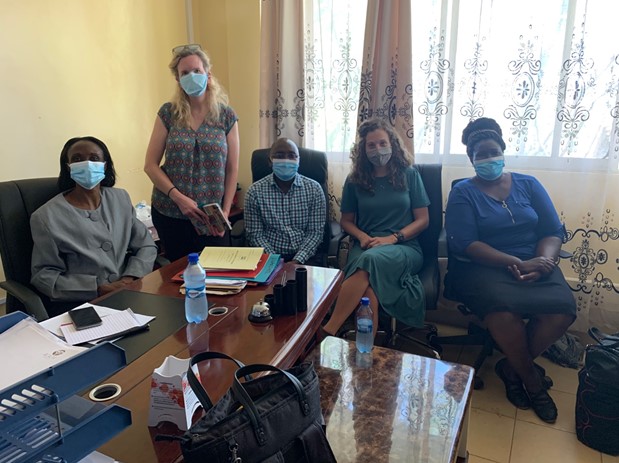Researching Sexual and Reproductive Health in Kenya during COVID.
By Kelly Hunter

(Photo: Kelly Hunter)
My qualitative work on NGOs began in February 2020 when I was last in Kenya. I met with several Kisumu-based sexual and reproductive health NGOs to learn about how the US’s global gag rule had impacted their operations, relationships with donors, and relationships with other NGOs. When the pandemic hit, my undergraduate research assistants and I conducted additional interviews over zoom to understand how the pandemic impacted their service delivery. Thanks to generous funding from Bass Connections, I was able to return to Kenya to resume my dissertation research under the mentorship of Dr. Megan Huchko in March 2022. It was wonderful to be back after two years away and to conduct research with Kenyan colleagues in person again. I spent part of the time conducting follow-up interviews with sexual and reproductive health NGOs in Kisumu and part of the time preparing to conduct a survey in Migori County later this year.
The qualitative research conducted prior to the pandemic was helpful, and the team reconnected with some of these same NGOs to learn how they were adapting their work in this less acute phase of COVID-19, and to understand the implications of President Biden’s repeal of the global gag rule. Although I was disappointed to learn that the NGOs had not experienced an increase in US funding, I was encouraged to hear they had increased their cooperative arrangements in order to provide more comprehensive services. I plan to write an article in a political science journal about this NGO cooperation.
My second project, an original survey to be conducted in Migori County, is an extension of the work I have been doing with the Center for Global Reproductive Health and their Big Data for Reproductive Health (bd4rh) Bass Connections team over the past four years. Our bd4rh team applies quantitative research methods to reproductive health research. In gathering data from over 1,000 respondents in rural Kenya, my survey seeks to a) identify mechanisms that increase women’s empowerment, b) quantify their impact on various dimensions of empowerment; and c) assess their resiliency in the wake of the COVID-19 pandemic. To understand the downstream, non-medical outcomes of Dr. Huchko’s cervical cancer screening intervention (2016) that contributed to increased women’s empowerment, I will measure 3 dimensions of empowerment that underscore different mechanisms that may have been triggered by this health intervention: health empowerment, socio-cultural empowerment, and political empowerment. The modules I have created ask questions about each of these areas of empowerment to test if there are differences between the treatment and control groups in one or more of these empowerment areas. This survey also includes two survey experiments to understand more about empowerment in rural Kenya, independent of the association with the original cervical cancer screening intervention.
In preparation for my survey on women’s empowerment in Migori County, I met with county health officials and the sexual harassment and gender-based violence coordinator in Migori. The county officials with whom I met provided input on my survey questions and were supportive of my research. They even requested that I share my results with them in the fall so that they may use this research in future planning around sexual and reproductive health campaigns in their county. After meeting with the county officials, I spoke with research local assistants who will be helping me conduct this work, and I toured some of the rural villages where the survey will take place. I look forward to returning in July to carry out the study. All in all, it was a productive trip on many fronts.